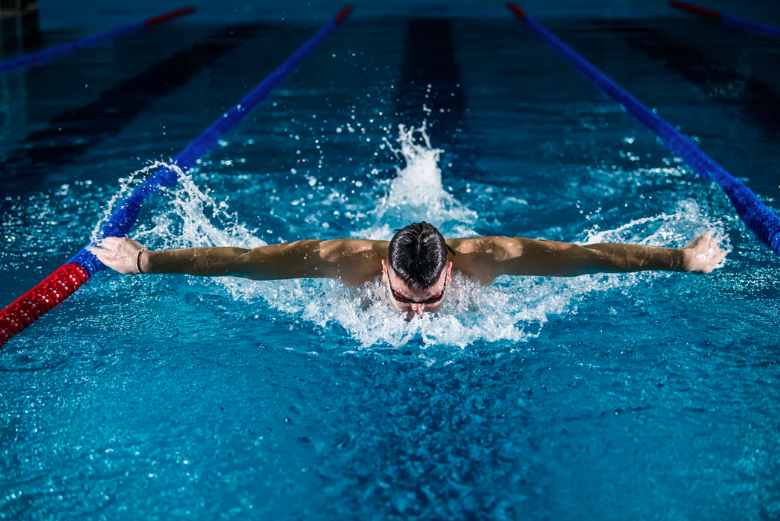
The butterfly is a swimming stroke swum on the chest, with both arms moving symmetrically, accompanied by the butterfly kick, also known dolphin kick. While other styles like the breaststroke, front crawl, or backstroke can be swum adequately by beginners, the butterfly stroke in particular is one of the hardest strokes to learn. It requires strength, stamina and a precise technique. The main difficulty for beginners is the synchronous over-water recovery, especially when combined with breathing, since both arms, the head, shoulders and part of the chest have to be lifted out of the water for these tasks. Once efficient technique has been developed, it becomes a smooth, fast stroke. It goes without saying that the key to learning the butterfly is practice, practice, practice! This goes for learning any kind of swimming stroke or skill.
Dolphin Kick
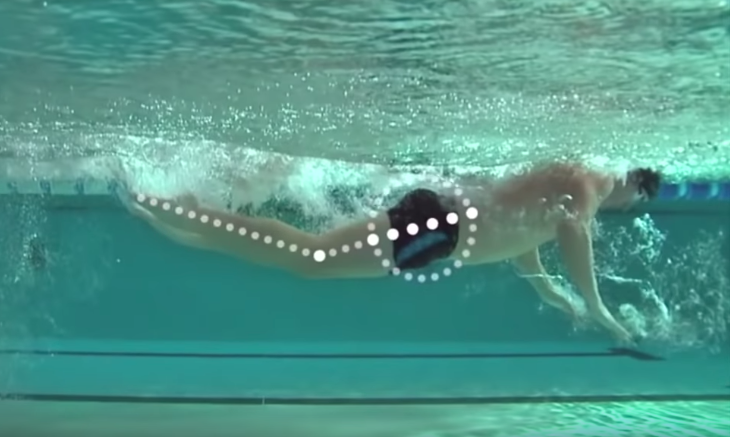
Image via SwimShop
The kick used to swim butterfly is the dolphin kick, it’s a bit more difficult in comparison to the flutter kick and the whip kick as the power and thrust comes from the hips and requires a streamlined body position in the water. Coupling the dolphin kick with the butterfly stroke arms makes it that much harder as you need to focus on correct timing and breathing. Don’t worry! Practicing your kick and your stroke individually from one another before you put them together you will find that once you do combine your kick with your stroke to swim butterfly, you’ll do very well.
A good way to practice the butterfly kick is by holding on the the pool’s edge or by using a flutter board. Have your arms extended out in front of you with your face in the water. Stare at the pool floor. To make the learning experience more comfortable, wear swimming goggles and a centre snorkel. Once you get the motion down, try the kick using the freestyle stroke.
Keep your legs as close together as possible with your toes pointed. When you do the dolphin kick it should be a smooth synchronous undulating motion. The shoulders are brought above the surface by a strong up and medium down kick, and back below the surface by a strong down and up kick.
Body Position for Butterfly Stroke
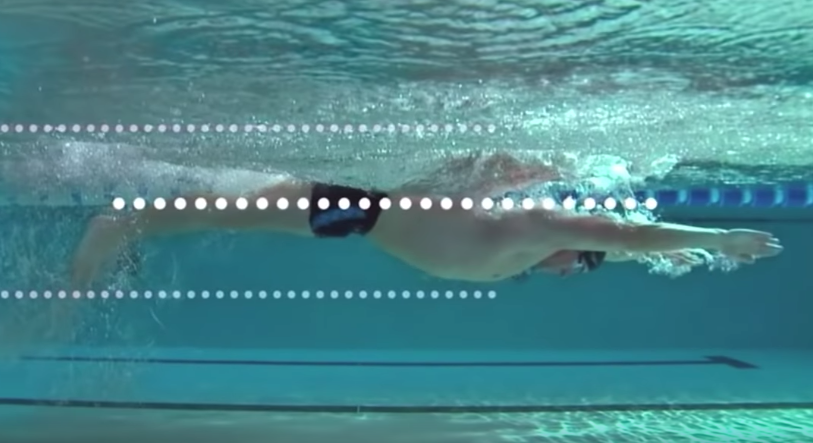
Image via SwimShop
Keep your head in a neutral face down position, directing your eyes to the bottom of the pool. This will help straighten your body while positioning it high in the water. Flatten your back and keep your body as flat as possible. Maintain a facedown position, keeping your head still unless lifting it to breathe. You can use a centre snorkel to practice keeping your head in the correct position as you learn how to do the butterfly stroke.
To maintain an efficient body position as you swim this stroke, keep your chin as close to the water line as possible when you go up for a breath.
Butterfly Stroke
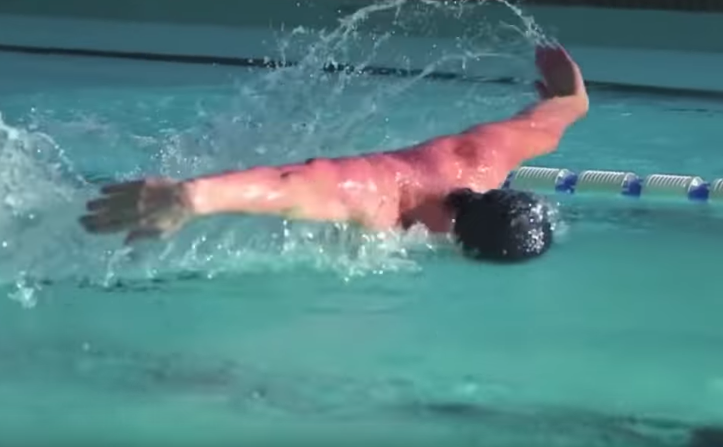
Practice both outside and inside of the pool. Getting the arm motion correct is the first step. When you’re in the water do the arm motion while standing in one spot.
The butterfly stroke has three major parts, the pull, the push, and the recovery. At the beginning the hands sink a little bit down with the palms facing outwards and slightly down at shoulder width. Then the hands move out to create a Y. This is called catching the water. The pull movement follows a semicircle with the elbow higher than the hand. The hand pointing towards the centre of the body and downward.
The push pushes the palm backward through the water underneath the body at the beginning and at the side of the body at the end of the push. The swimmer only pushes the arms 1/3 of the way to the hips, making it easier to enter into the recovery and making the recovery shorter and making the breathing window shorter. Both arms should come out of the water at the same time on every stroke.
The recovery swings the arms sideways across the water surface to the front, with the elbows straight. The arms should be swung forward from the end of the underwater movement. The arms enter the water with the thumbs first at shoulder width. A wider entry loses movement in the next pull phase, and a smaller entry, where the hands touch, wastes energy.
Breathing Technique
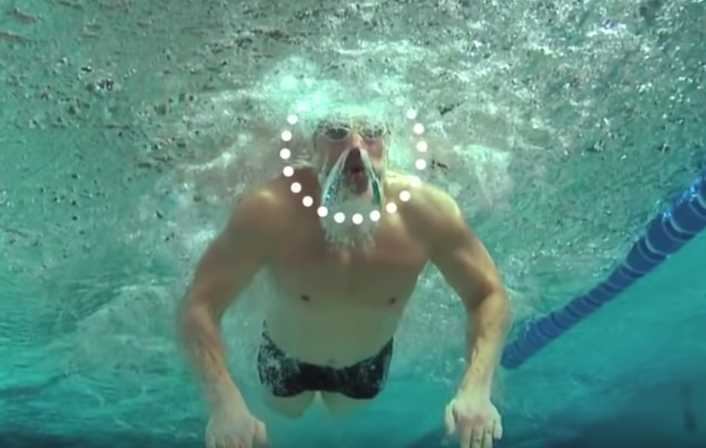
Image via SwimShop
Breathing is extremely important in swimming. Having a good breathing technique delivers oxygen to your muscles and helps you swim more comfortably and efficiently. As your arms begin to pull down through the stroke, breathe out through your nose as you begin to lift your head to take a breath. Practice breathing while you practice the stroke standing in place. This will better prepare you for when you combine the dolphin kick with the butterfly stroke.
Altogether Now!
After you’ve practiced hard and nailed the dolphin kick and the butterfly stroke individually, it’s time to add them together. Don’t forget your breathing technique!
Find a Coach or Swimming Instructor
At the end of the day you can practice and practice but you’ll need someone who knows how to execute the butterfly stroke. A coach will help you identify what you’re doing wrong so that it’s easier to correct! Finding a coach or a swimming instructor can also help you learn the stroke quicker so that you can move onto mastering the stroke. Learning the stroke is one thing but mastering the stroke improves efficiency. The benefit of an efficient stroke is that it is less tiring to execute. AquaMobile swimming instructors come to you! Lessons are given in the comfort of your own home and on your schedule. You even get to choose your swimming instructor! Most of our instructors are or have been competitive swimmers on the regional or national scale. Our swimming instructors have been swimming anywhere from 3 – 50 years!

